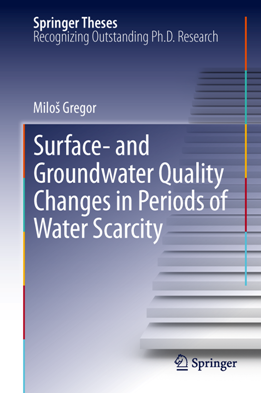Year before I completed PhD at the university, which was ending with relative extensive work. Side product of this work is also the HydroOffice software. Now is available text, finally in English. This work I publish in Springer in the series Springer Thesis Series. My thesis is released under the title "Surface- and Groundwater Quality Changes in Periods of Water Scarcity" and it can be obtained as a printed book or in digital form on the server springer.com.

The book deals with the assessment of hydrological drought and assessing the drought impact on the quality of surface- and groundwater. The book has 230 pages, 125 illustrations (107 in color) and more than 100 tables. The content consists of:
- Introduction
- Methodology
- Software tools used at work
- Area of interest and its natural conditions
- Analysis of hydrological drought
- Water quality assessments in dry seasons
- Summary of thesis results
- Recommendation for further research
- Conclusions
The first chapter describes the reason for the study on this issue, the area of interest and technical details. The second chapter deals with the description of hydrological drought assessment and water quality in the Slovak and international literature. The next chapter deals with the description of new programs that I programmed for the purposes of this work. The following section describes the area of interest in which the issue is solved. Another text is devoted to the evaluation and comparison of the incidence and nature of hydrological drought in different components of hydrological cycle in the catchment. The following chapter is devoted to the evaluation of changes in water quality in the basin at different quantitative water statuses. The last chapters summarize obtained results and suggest next possible ways in research.
The whole book is my most extensive text work, and I think that can be beneficial material for other scientists working in this field. Some of the programs described in text are not yet publicly available, but on this I working, and gradually will be all released.